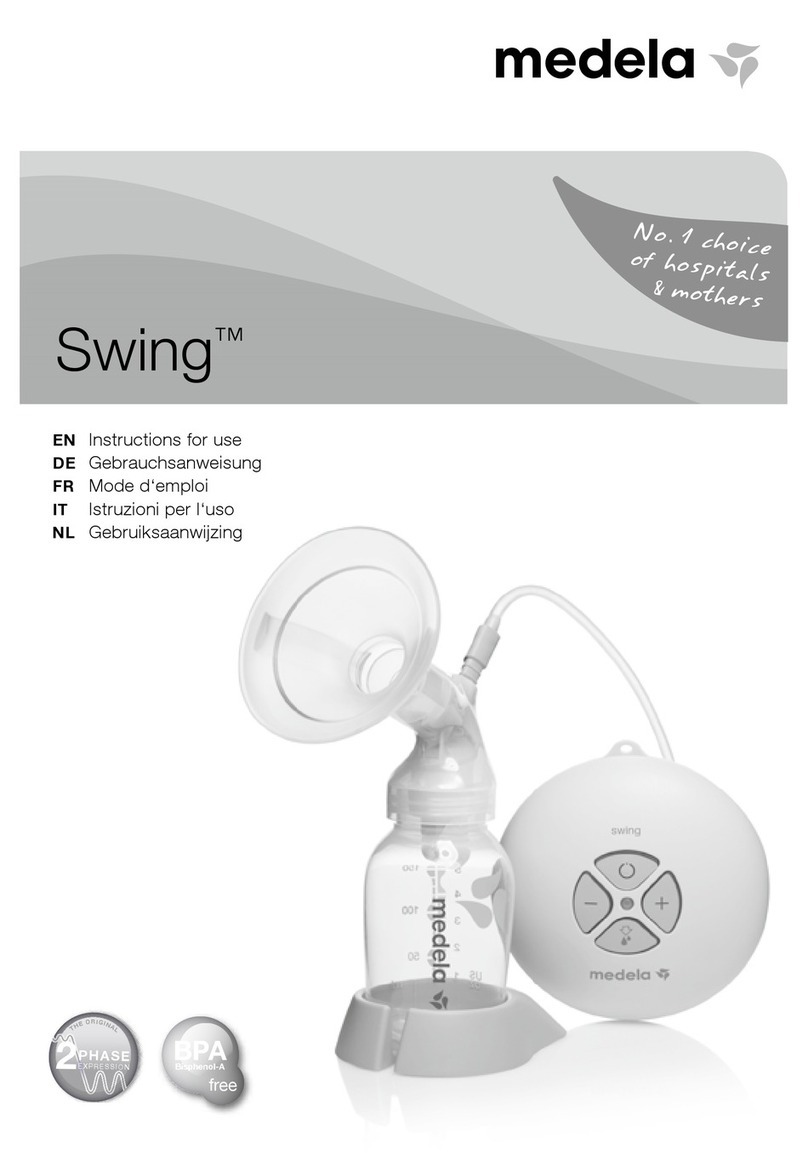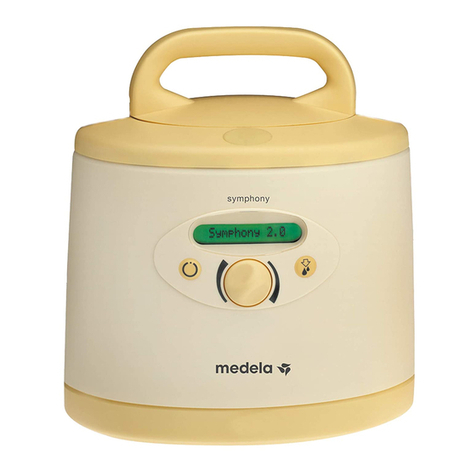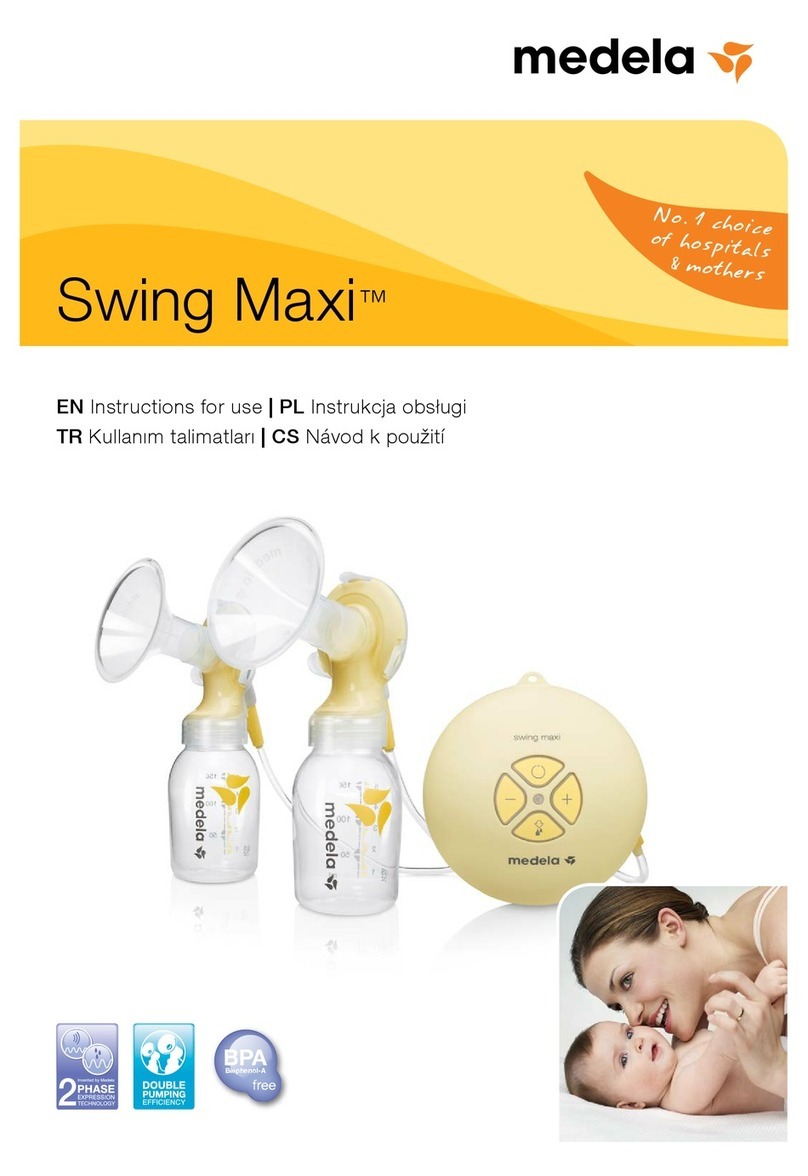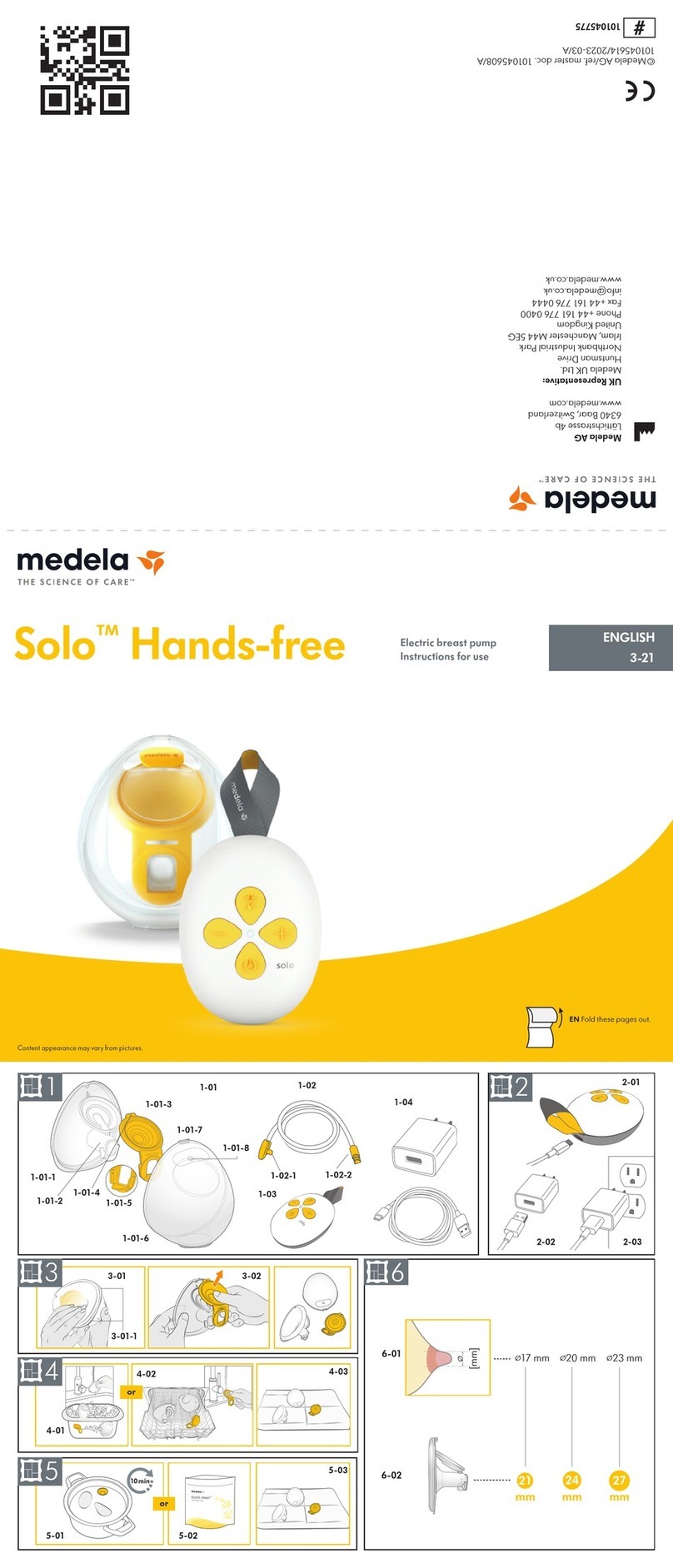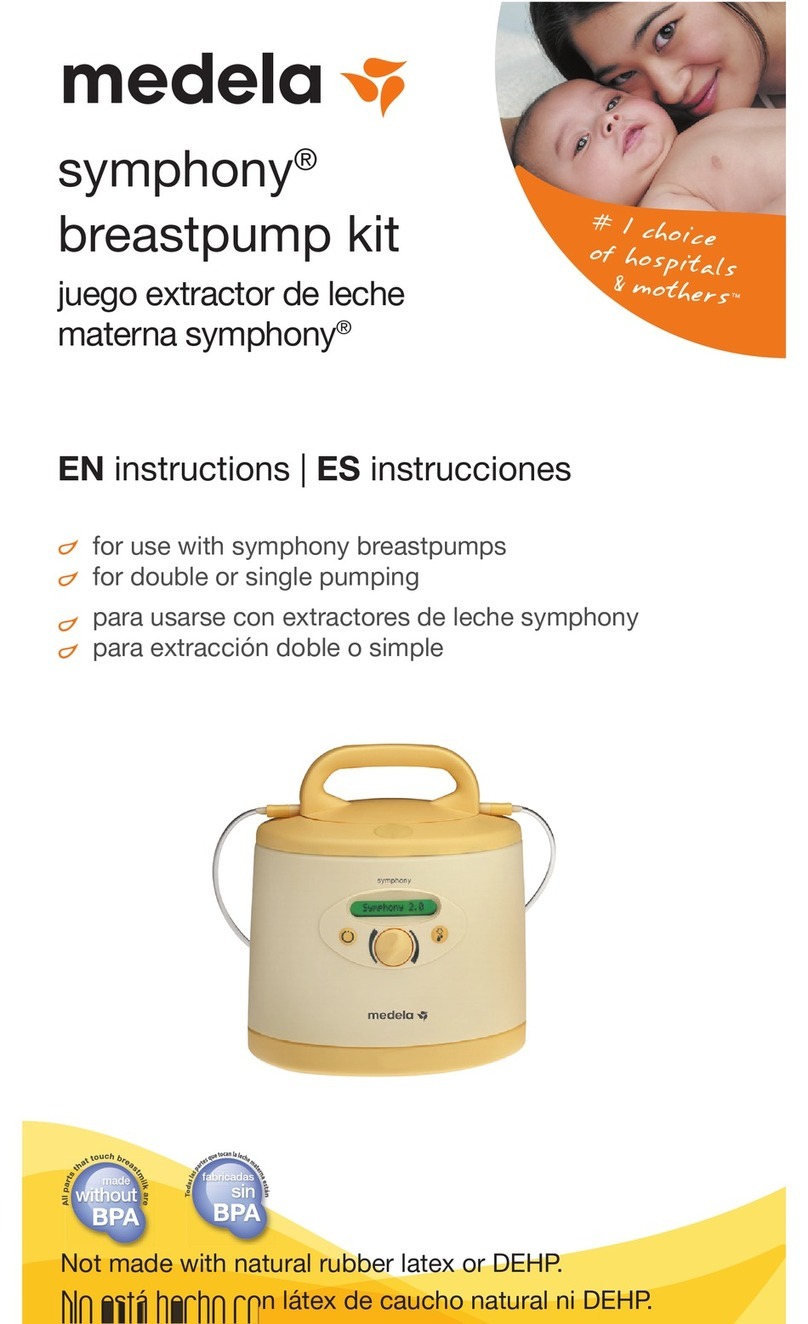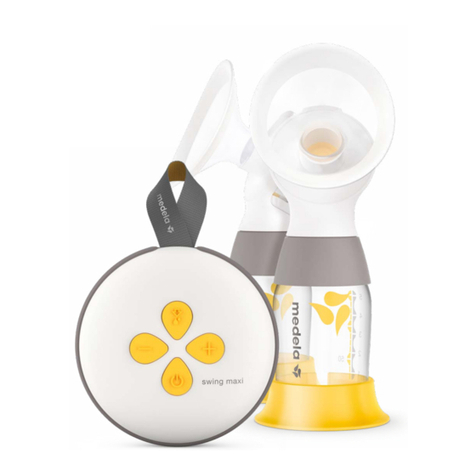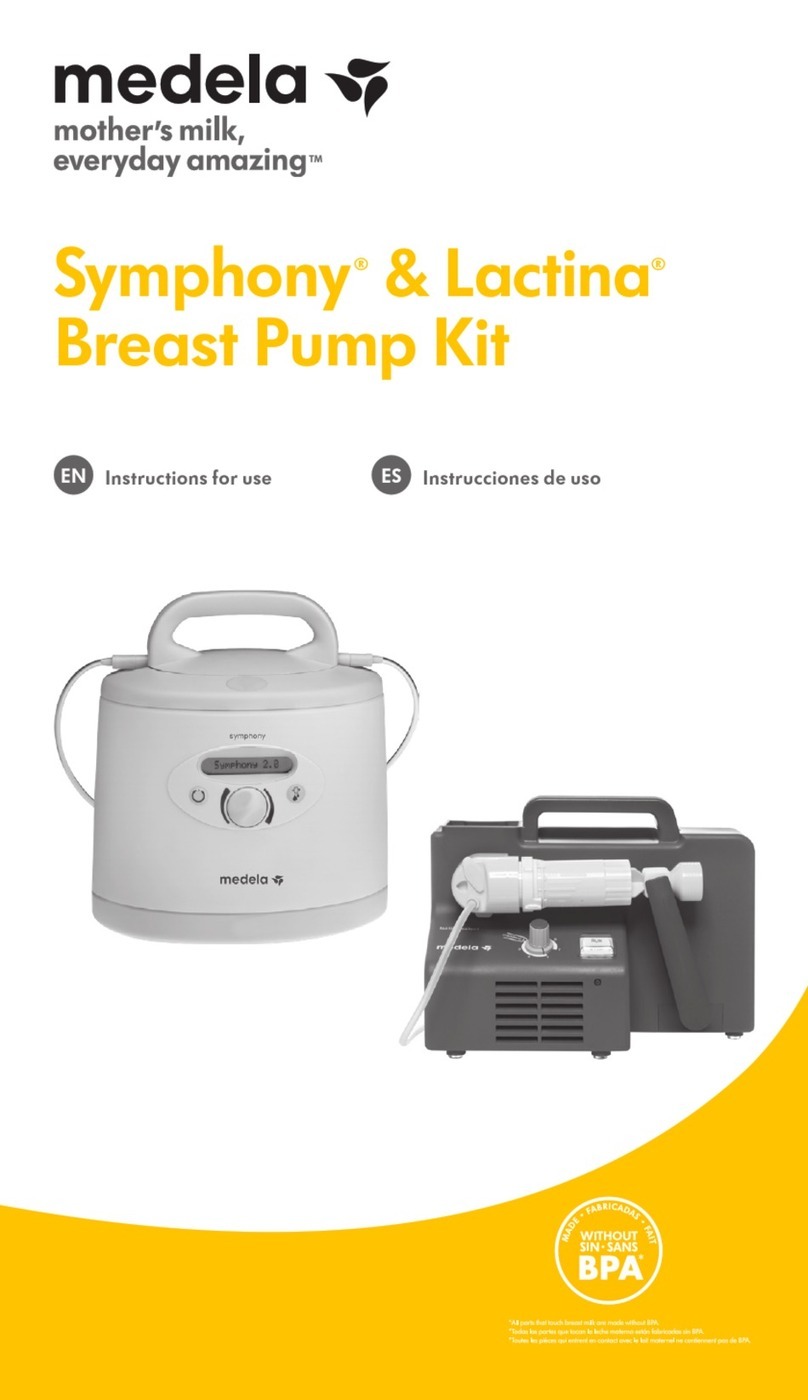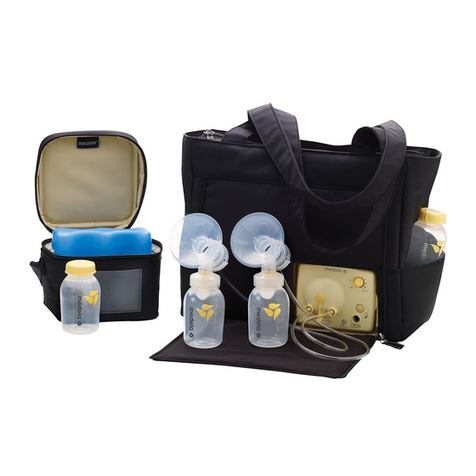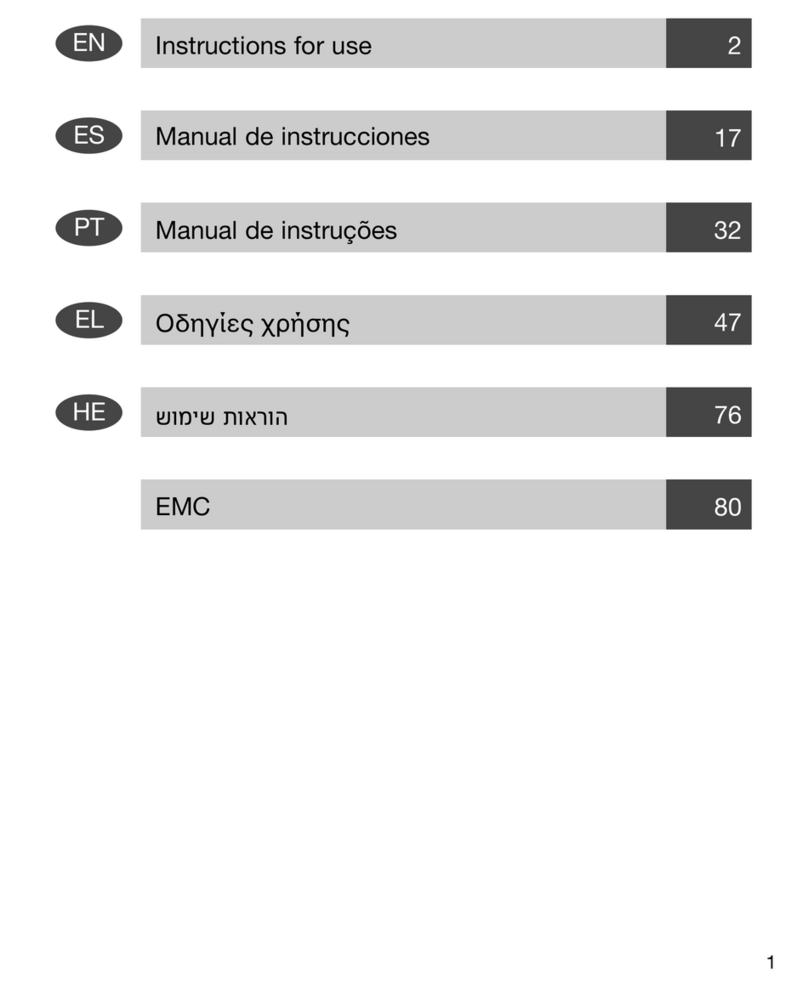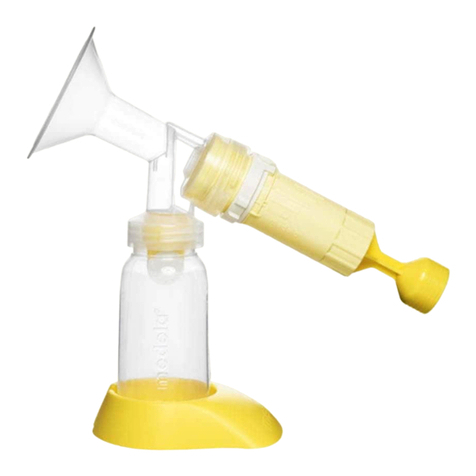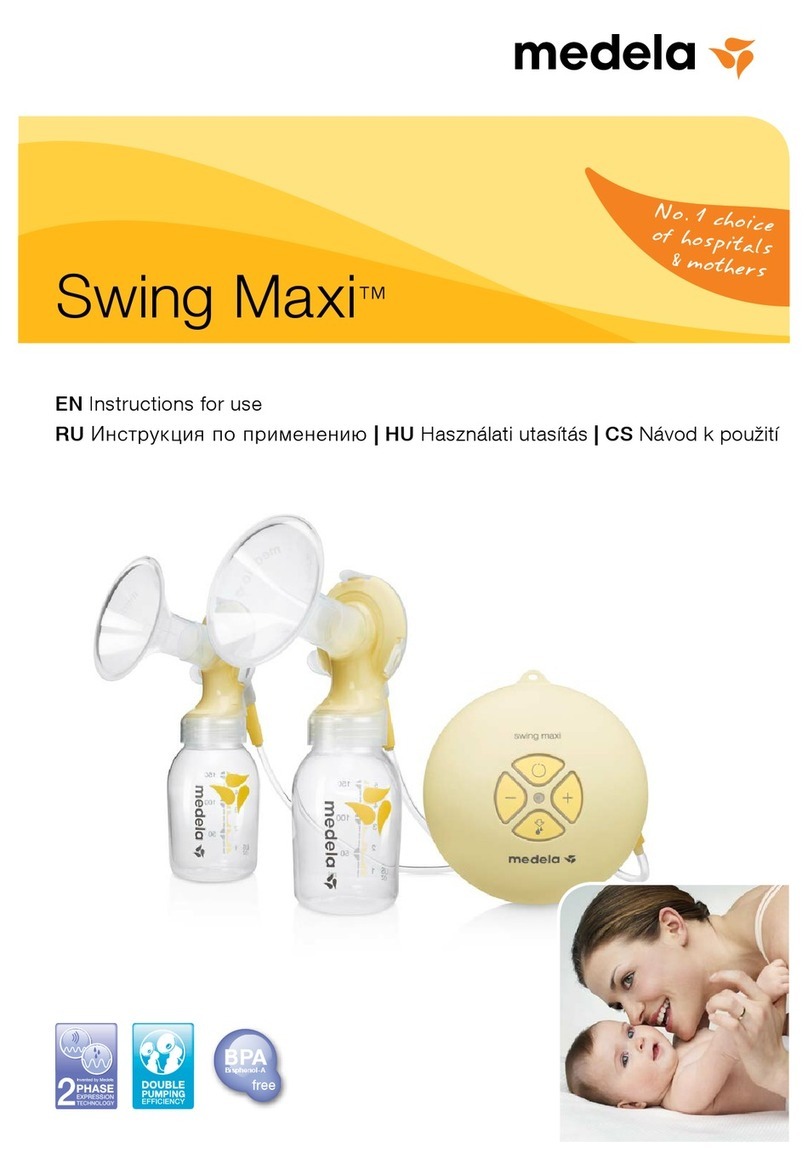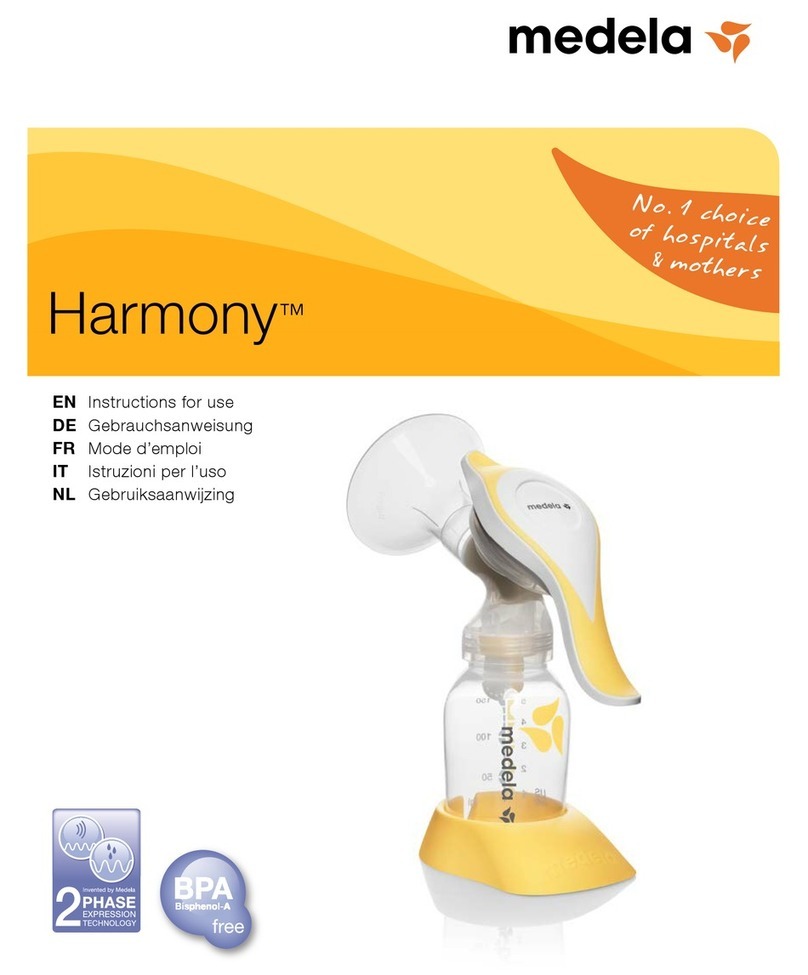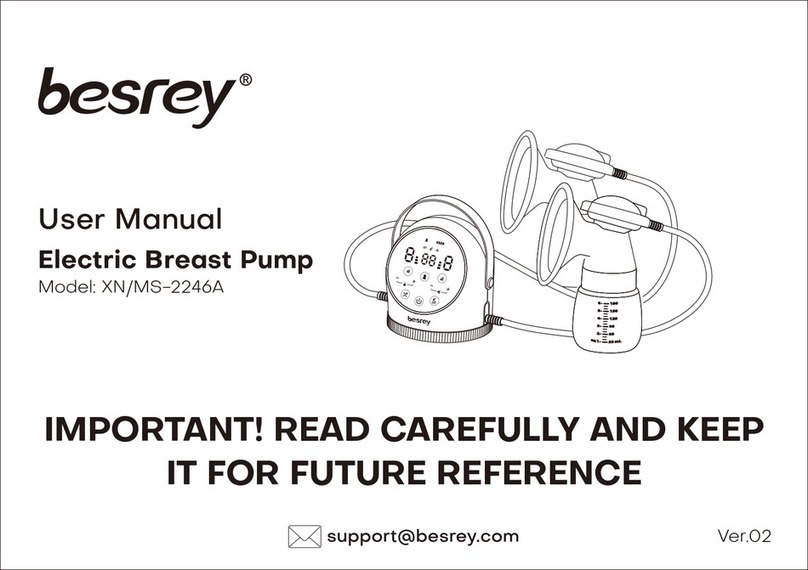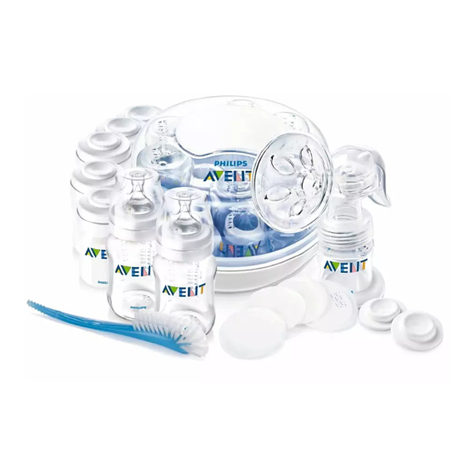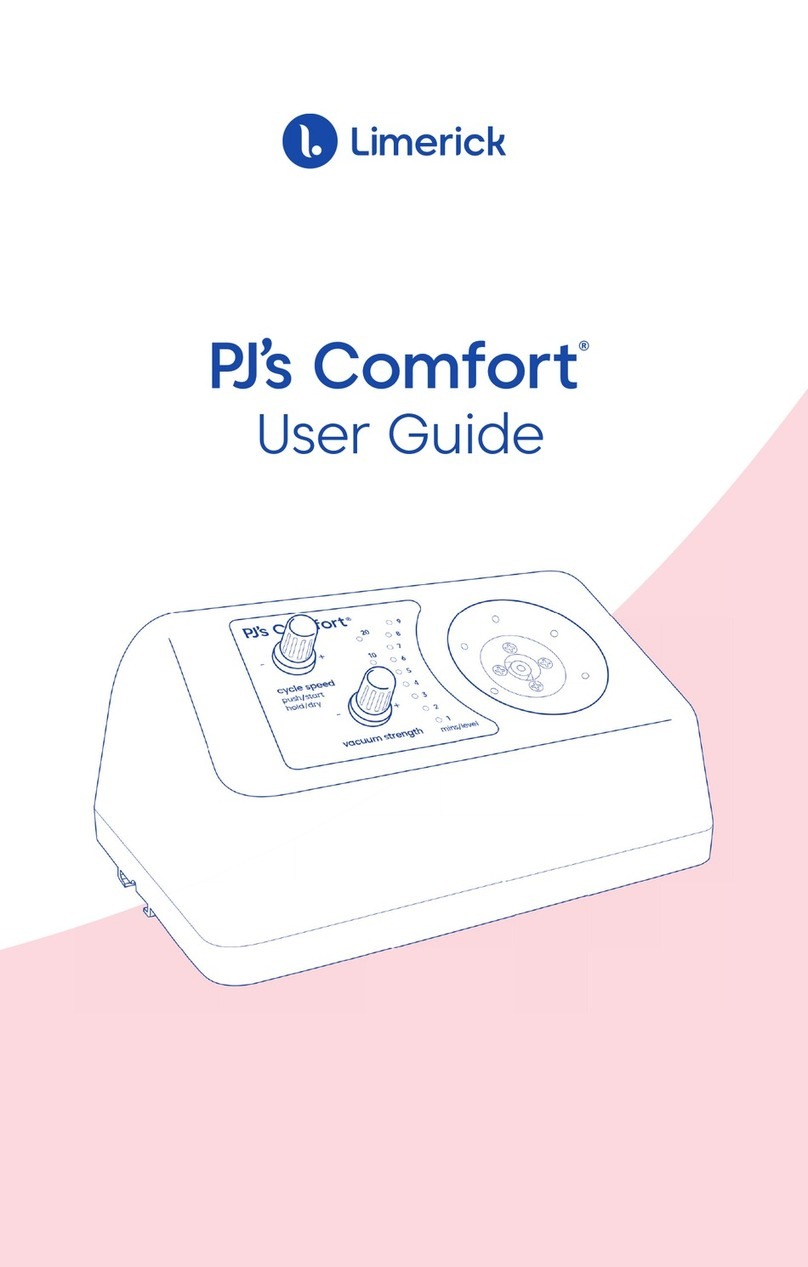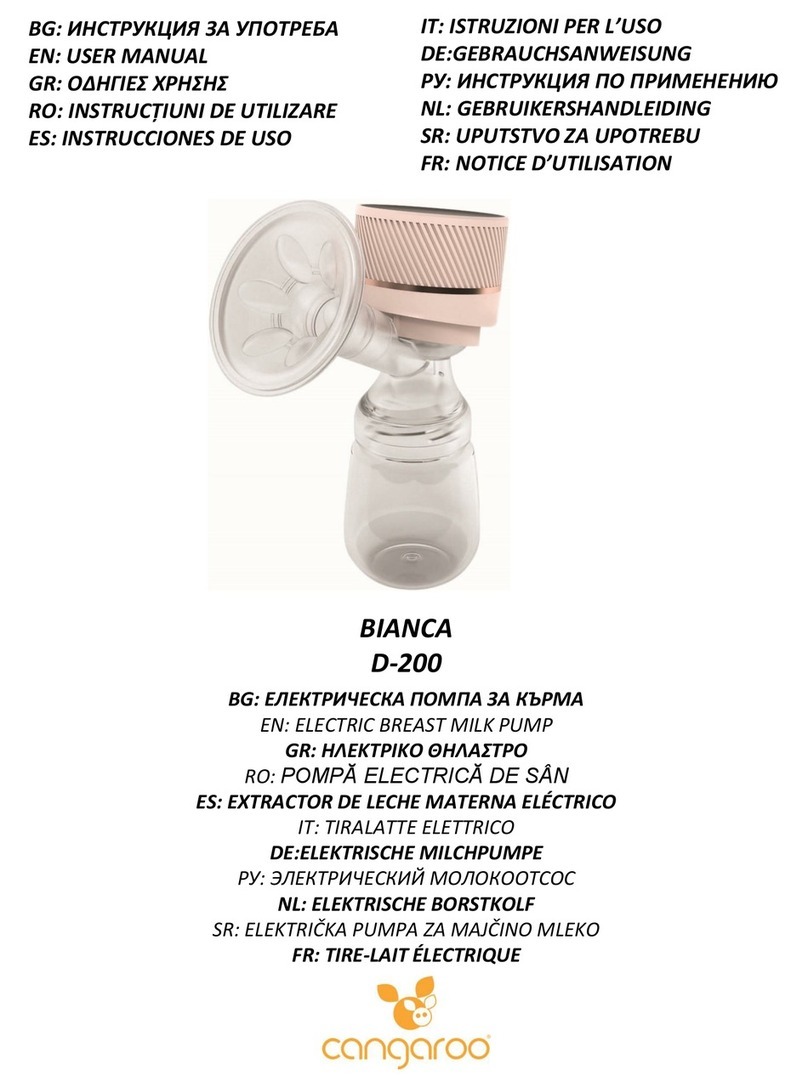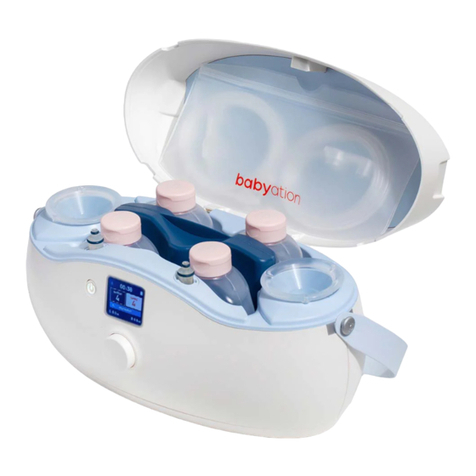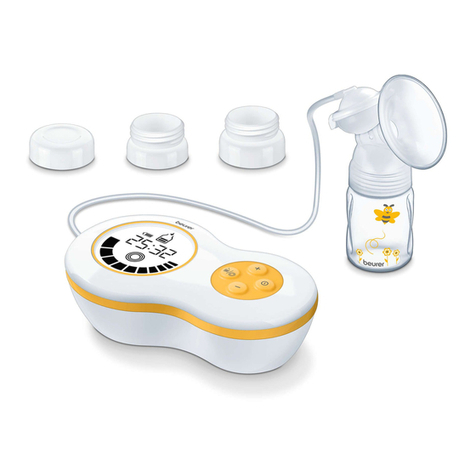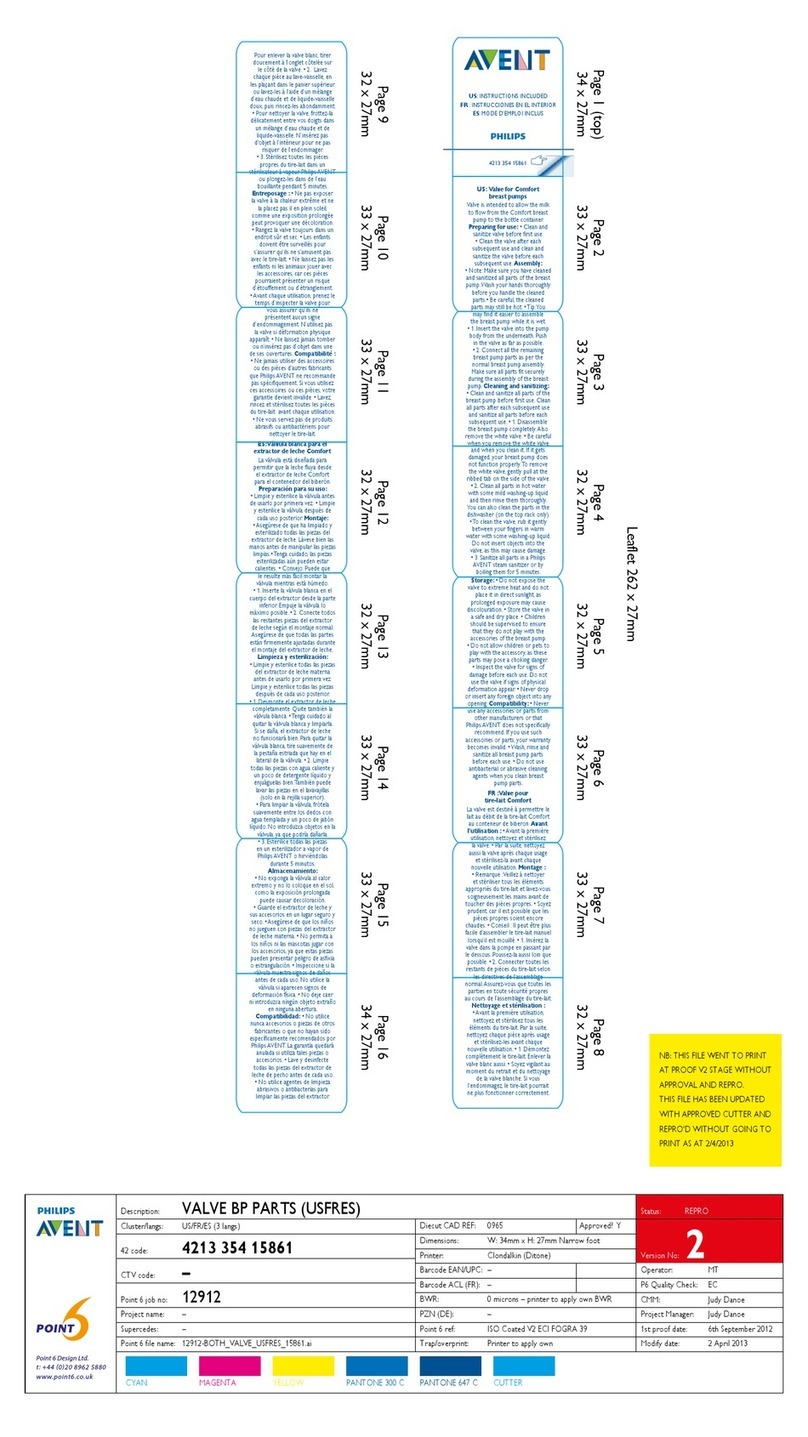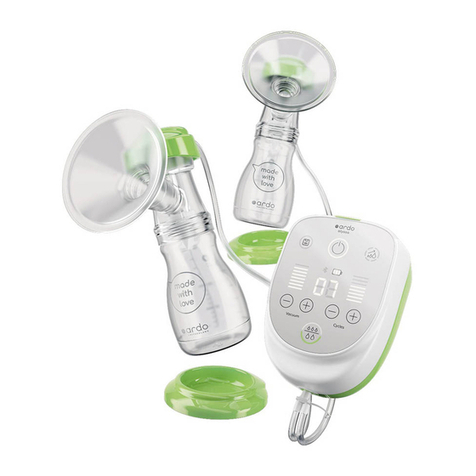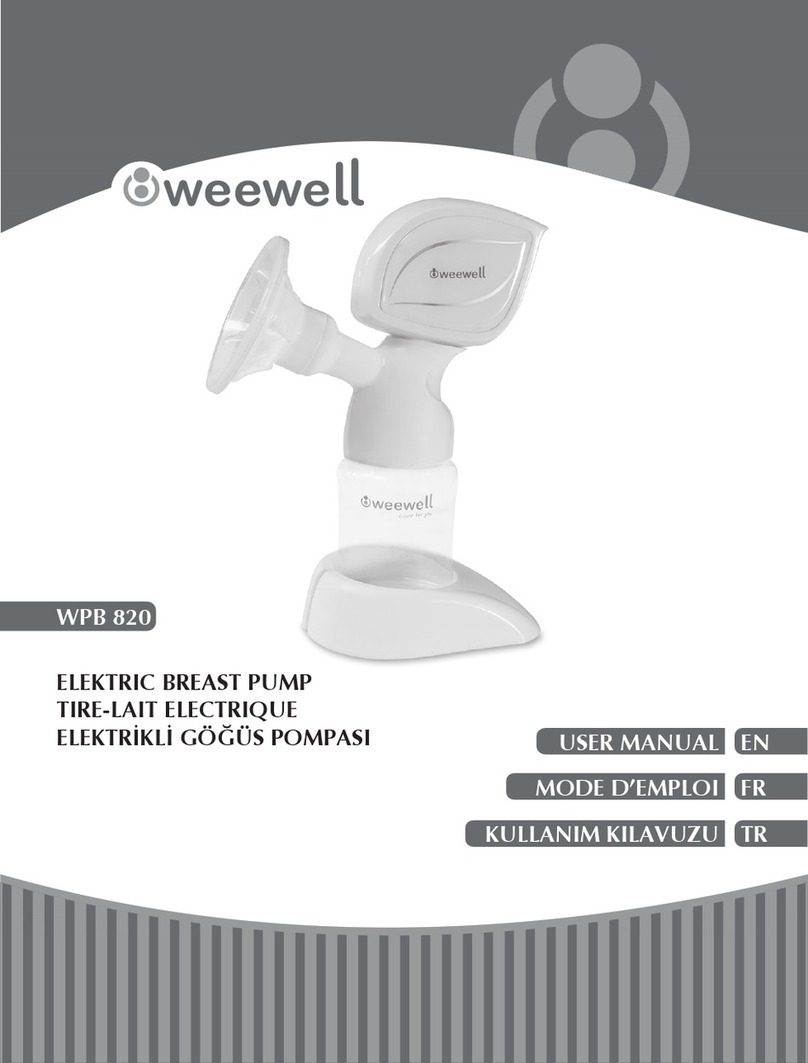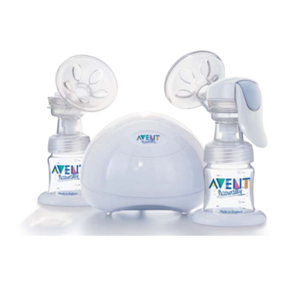
16 17
Low or No Suction Valve and Membrane Check
• Remove and separate valve from membrane
• Inspect the valve for chips or cracks� Inspect
the membrane for holes or tears� If flawed or
damaged replace valve and/or membrane
prior to pumping
• Wash valve and membrane per Cleaning
instructions in section 2�
• Reassemble� Make sure the membrane lays
flat on the valve, and if it does not, replace
the valve and/or membrane prior to pumping
Breastshield and Breastshield
Connector Check
• Inspect breastshield and breastshield
connector to make sure there are no cracks
and they securely attach to each other
Other Checks
Inspect the following to check for damage and
secure connections�
• Tubing adapter to breasthield connector
• Inspect Symphony membranes� If
membranes appear to be worn or
have a tear they need to be replaced
(Article#8200094)�
• Inspect piston/cylinder on Lactina� Refer to
Piston/Cylinder Cleaning in section 2�4 for
further instructions�
• Test vacuum� If suction is not improved,
contact Medela Customer Service at
1-800-435-8316�
Condensation or
milk in tubing
• Refer to “Tubing cleaning” section 2�5�
No “let-down”
or breastmilk
expression
• Ensure your breastpump kit is assembled
correctly and that there is suction�
• Relax and take a 10-15 minute break if let
down is not achieved after 2 consecutive
pumping sessions�
• Consult with your healthcare provider or
breastfeeding specialist if expression does
not occur�
If assistance is still needed after reviewing this booklet, please call Medela
Customer Service at (800) 435-8316 or (815) 363-1166.
4. Troubleshooting
Following are some common breastfeeding related conditions�
If you experience any of these symptoms, contact a healthcare
professional or breastfeeding specialist�
Symptom Potential Causes
Engorgement Breasts are hard
and uncomfortable,
possibly with reddened
areas�
Milk not draining properly
from breast� Milk can
drain back into the tissue
causing areas to swell
and become tender�
Blocked/
Plugged Ducts
Area of breast will look
reddened and may be
tender to touch�
Milk not being drained
from a specific duct� The
area becomes ‘clogged’
up and milk is then
prevented from flowing�
Mastitis It often follows on from
engorgement but can
just occur suddenly�
The initial symptoms
are similar to flu –
fatigue, headache and
muscle aches, fever
and localized breast
tenderness� It can be
in one or even both
breasts and needs
immediate treatment�
A bacterial infection in
the breast tissue which
is often accompanied by
cracked nipples�
A Healthcare Professional or Breastfeeding Specialist can give you
guidance in breastfeeding your baby and using a breastpump� Their
guidance is valuable in terms of the lifetime of health benefits for both
you and your baby� A listing of Lactation Professionals are available at
www�medelalocator�com or call 1-800-TELL-YOU (1-800-835-5968)�
5. Supplemental Information

